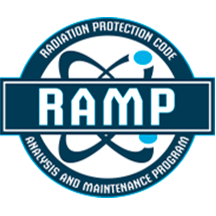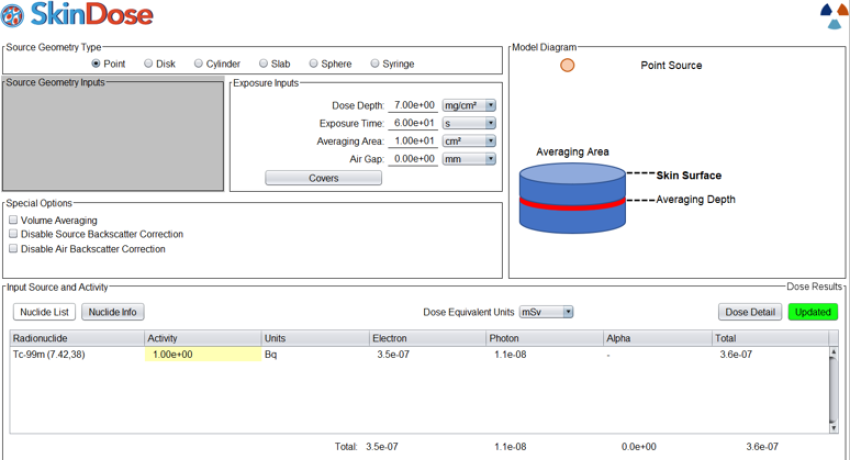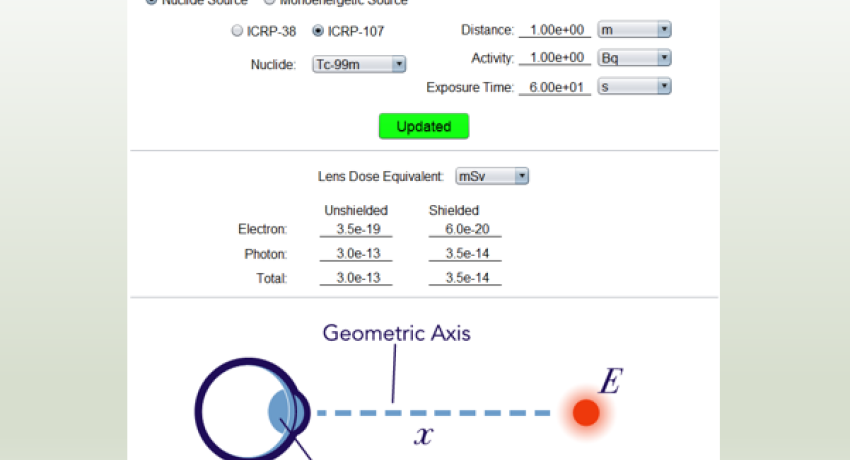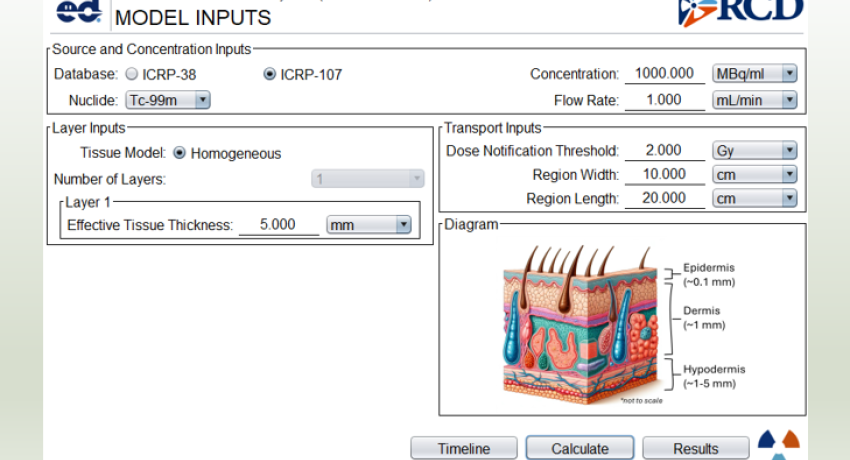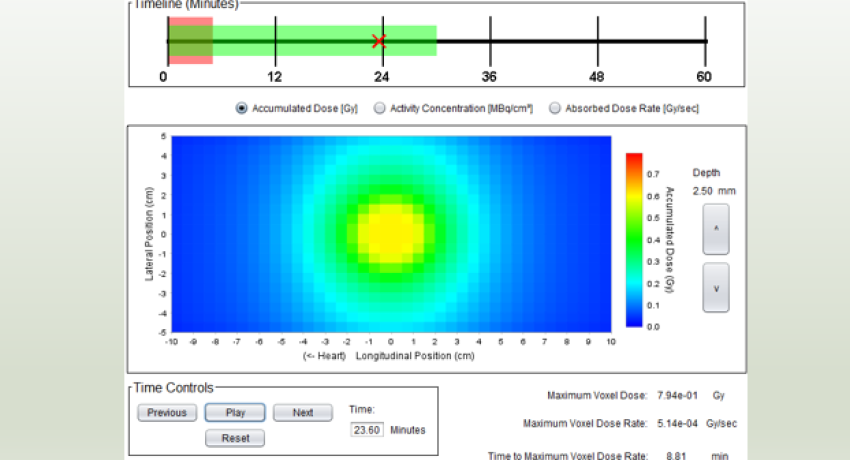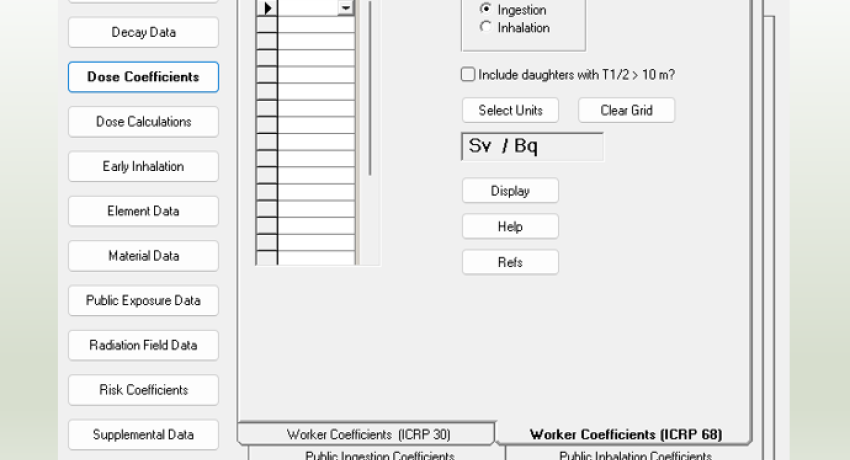Comprehensive radiation dose assessment tool designed to evaluate occupational, public, and medical exposure scenarios.
V+ is a comprehensive radiation dose assessment tool designed to evaluate occupational and medical exposure scenarios. The software includes six specialized modules, each tailored to a specific type of radiation dose calculation:
- SkinDose – Calculates occupational dose to the skin from radiation emitted by hot particles or surface contamination. This assessment aligns with 10 CFR 20.1201(c), which mandates dose assignment to the highest exposed area of a 10 cm² section of skin at a tissue depth of 0.007 cm.
- WoundDose – Based on NCRP Report 156, this module estimates shallow dose equivalent (SDE), local dose equivalent, and committed effective (and organ) dose equivalent for radiation exposure due to contaminated wounds from industrial or medical incidents. It is compatible with NRC regulations for wound dose assessments.
- NeutronDose – Estimates tissue dose at a specified depth following exposure to neutron radiation, covering a broad energy spectrum from thermal to fast neutrons.
- EyeDose – Evaluates photon and electron dose to the lens of the human eye, both shielded and unshielded. It supports calculations using radionuclides from ICRP 38 and ICRP 107 databases or monoenergetic sources.
- Radiological Toolbox – Provides a readily accessible database of radiation safety and protection data, including dose coefficients for radionuclide intake, external exposure scenarios, and photon/neutron radiation fields.
- ExtravDose – Assesses local tissue dose from radiopharmaceutical extravasation during medical administration. Users can choose between Basic Mode, for quick approximations using minimal inputs, or Advanced Mode, for detailed modeling with expanded parameters. The current license key for this module expires December 31st, 2025, at which point users must email RAMP [at] NRC.gov (RAMP[at]NRC[dot]gov) to receive their new annual license key.
V+ is an essential tool for radiation safety professionals, providing robust modeling capabilities to support regulatory compliance and radiation protection efforts.
